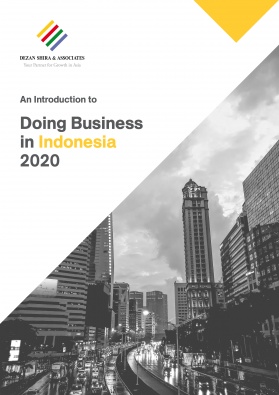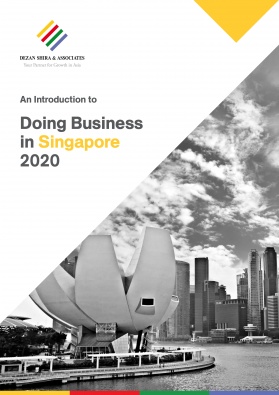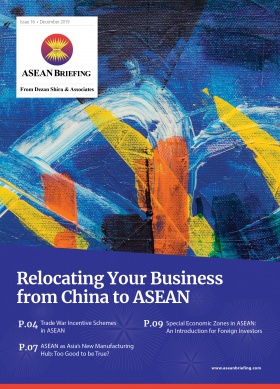Special Economic Zones in ASEAN: Opportunities for US Investors
- The ASEAN region presents new opportunities for US investors, in particular those who are looking to diversify their supply chains.
- The bloc’s special economic zones (SEZs) can help facilitate greater trade between ASEAN and the US through various fiscal and non-fiscal incentives.
- Total bilateral trade between the two regions reached more than US$260 billion with major ASEAN exports including electrical products, machinery, textiles, and commodities.
To consolidate its emergence as a powerful trading bloc, ASEAN member states have been promoting special economic zones (SEZ) as a cornerstone for efforts to encourage more foreign investment.
SEZs – which include industrial parks, special export processing zones, technology parks, and innovation areas – gained increasing prominence after the establishment of the ASEAN Economic Community (AEC) in 2015, and more so now as a tool to attract US investors seeking to diversify their supply chains.
Total two-way trade between ASEAN and the US reached US$260 billion in 2018. The US is also ASEAN’s fourth largest trading partner.
The top export categories from ASEAN to the US are electrical machinery, machinery, textiles and garments, and footwear. Vietnam was the largest exporter to the US, amounting to US$49.2 billion in 2018, along with Malaysia (US$39.4 billion), Thailand (US$31.9 billion), Singapore (US$27 billion), and Indonesia (US$21 billion).US investors looking to take advantage of SEZs in ASEAN should seek to develop a base understanding before assessing factors that may impact their business.
Thailand
In 2015, Thailand commenced the development of 10 SEZs located across border areas contiguous to Myanmar, Malaysia, Laos, and Cambodia. The aim of the initiative was to take advantage of increasing border trade between these neighbors, which was valued at 1 trillion Thai Baht (US$32 billion) in exports in 2018. The government has claimed that total investments into its SEZs have reached US$23 billion since 2015.
Major export categories from Thailand to the US include computers, rubber tires, semi-conductors, computer chips, and precious stones, totaling more than US$30 billion in 2019.
The government has targeted 13 priority sectors to be developed through the SEZs, which include the agri-industry, manufacturing of engines and vehicle parts, and the manufacture of textiles and garments, among many others. Businesses that set up in SEZs are offered a variety of incentives ranging from eight years corporate income tax (CIT) exemption and an additional 50 percent CIT reduction for five years.
There are also further tax incentives through the ‘Thailand Plus’ policy. Part of this policy encourages the development of the science, technology, engineering, and mathematics (STEM) industry, vital for the advancement of the many manufacturing activities in the SEZs.
The full list of the targeted sectors can be found on page 34 of the SEZ Investment Guide, issued by the Thailand Board of Investment (BOI).
Indonesia
The country currently operates 13 SEZs located throughout the vast archipelago, offering growing opportunities for investments in manufacturing, agriculture, natural resources, and tourism.
Three were launched in 2019 with one being in East Kalimantan province – the proposed site for the new capital – and an additional seven SEZs are currently in the development phase for 2020, as it aims to attract more than US$50 billion in investments into its SEZs over the next decade. More than US$25 billion in trade was done between Indonesia and the US in 2019, in particular for seafood, rubber, textiles and garments, palm oil, and oil products.
The country will launch more tax incentives, such as CIT breaks for 20 years for investments worth more than US$1.4 billion, as well as expanded incentives for export-oriented industries operating in SEZs.
Philippines
The Philippines has 12 SEZs or free port areas, 22 specific agri-business zones, and a further 300 proclaimed economic zones spread throughout the country. These economic zones are classified into manufacturing, tourism, digital parks, and medical tourism parks.
Computer parts, computer chips, transformers, and insulated cables were the top exports to the US in 2019, amounting to more than US$12 billion.
There are seven main investment promotion agencies (IPAs) with the largest being the Philippine Economic Zone Authority (PEZA). Each IPA has the authority to grant its own financial and non-financial incentives. These have ranged from tax- and duty-free importation of raw materials to 100 percent exemption of CIT and visa facilitation services for foreign investors and their dependents.This will change with the introduction of Corporate Recovery and Tax Incentives for Enterprises Act (CREATE), a new law aimed at rationalizing specific tax incentives issued by IPAs. This means IPAs will no longer be given the authority to issue their own individual incentives and will have to follow new rules set out by CREATE.
Singapore
Singapore has the world’s largest port by shipping volume but is too small to have space for zones of its own. Instead, it has partnered with the Government of Malaysia to create the Iskander SEZ in nearby Johor Baru and with Indonesia to create the Batam Export Processing Zone.
Both are highly successful, particularly for Singaporean companies, which now use these zones as bases for factory extensions of their manufacturing operations to sell across Asia and beyond.
Indonesia has recently eased business license processing in Batam, and the Batam Indonesia Free Trade Authority says this project could attract a potential US$60 billion worth of investments.
Total trade between Singapore and the US reached US$57 billion in 2019, mostly for high-valued products and services, such as vaccines, engine parts, aircraft engines, financial services, research and development, and professional management services.
Vietnam
Vietnam has begun to expand its development zone policy to include 18 coastal economic zones and 325 state-supported industrial parks. These economic zones offer their own incentives from free tariffs to low personal income tax.
Vietnam was ranked 11th in total trade value in 2019 with the US, totaling more than US$25 billion. Vietnam’s top exports to the US were textiles and garment products (US$1.1 billion), more than US$3 billion in cell phones and related equipment and US$1 billion in furniture.
The country’s parliament has delayed issuing the Special Zone Act, which would see the creation of three new SEZs across the country. Located in the provinces of Quang Ninh and Khanh Hoa, and the island of Phu Quoc, these SEZs are set to provide foreign investors a 99-year land lease in addition to other incentives.
Additional export-processing facilities, and possibly SEZs, may develop along Vietnam’s long eastern seaboard as it seeks to compete with South China for foreign investment.
Malaysia
Malaysia has five investment corridors (a new type of SEZ): the East Coast Economic Region (ECER), Iskandar Regional Development Authority (IRDA) for Iskandar Malaysia in Southern Johor, and the North Corridor Implementation Authority (NCIA) for the North Corridor Economic Region (NCER).
Malaysia ships more than US$4 billion in computer chips to the US annually, in addition to US$890 million in semi-conductors, US$600 million in cell phones, and more than US$400 million in rubber and its accessories.
By 2018, the investment corridors had created close to 2 million jobs and have attracted investments worth RM788 billion (US$188 billion). The Iskander SEZ, has positioned Malaysia’s east coast as a key area for the development of ASEAN free trade, having realized the largest investments in 2018 totaling RM150 billion (US$35 billion). Since its inception in 2006, the region has doubled in size and is on track to achieve its investment target of US$91 billion by 2025.
The ECER, which is the other main SEZ, aims to attract 120,000 new jobs and 70 billion Ringgits (US$16 billion) in investments by 2025. The ECER offers competitive incentives to investors, such as income tax exemption of 100 percent for 10 years and stamp duty exemption on land or building purchased for development.
Cambodia
Cambodia has 31 SEZs across the country covering four zones, namely, the Phnom Penh zone, Sihanoukville zone, the Manhattan zone, and the Tai Seng Bavet zone. The country only records some US$5 billion in exports to the US although this is still a surplus of more than US$1 billion and the latter is Cambodia’s largest trading partner and export market.
Major export products are mainly textiles and garments, leather products, and footwear, accounting for more than US$1 billion annually.
The authority responsible for Cambodia’s SEZs is the Cambodia Special Economic Zone Board, which operates under the umbrella of the Council for the Development of Cambodia. Various tax incentives are available under these zones, ranging from 100 percent CIT exemption for up to nine years to the exemption from import and export duties.
Some notable US companies with investments in Cambodia’s SEZ include Coca-Cola, which opened a US$100 million plant at the Phnom Penz SEZ (PPSEZ) in 2016. Since then, other brands, such as Apple, Timberland, Puma, and IBM have established a presence at the PPSEZ.
Myanmar
The government established the Thilawa SEZ in 2011 and was operational in 2015. Two other SEZs are still in development, namely, Dawaei and Kyuakpyu SEZs. Total trade between Myanmar and the US is only valued at US$1.1 billion as of 2019 with the majority of exports to the US are textile and garments and leather goods.
The Thilawa SEZ project was a joint venture between the Myanmar and Japanese government. 90 international firms have already moved into the zone since 2015, coming from a wide variety of sectors that range from ship building to garment manufacturing.
The Thilawa SEZ has also developed a one-stop service center to provide an efficient and effective service to foreign investors. The center is comprised of officials from 13 ministries and uses advanced technology to process business permits in addition to broadcasting important legal information.
Through its SEZs, the government has granted several tax exemptions and relief measures for investors. This includes zero CIT for the first eight years of operations and 50 percent tax relief for the next five years.
This article was first published on June 13, 2013, and was updated on June 5, 2020.
About Us
ASEAN Briefing is produced by Dezan Shira & Associates. The firm assists foreign investors throughout Asia and maintains offices throughout ASEAN, including in Singapore, Hanoi, Ho Chi Minh City and Jakarta. Please contact us at asia@dezshira.com or visit our website at www.dezshira.com.
- Previous Article Myanmar SMEs Receive Financial Support from Japan
- Next Article Singapore Begins Phase 2 of Reopening: Safe Transition







